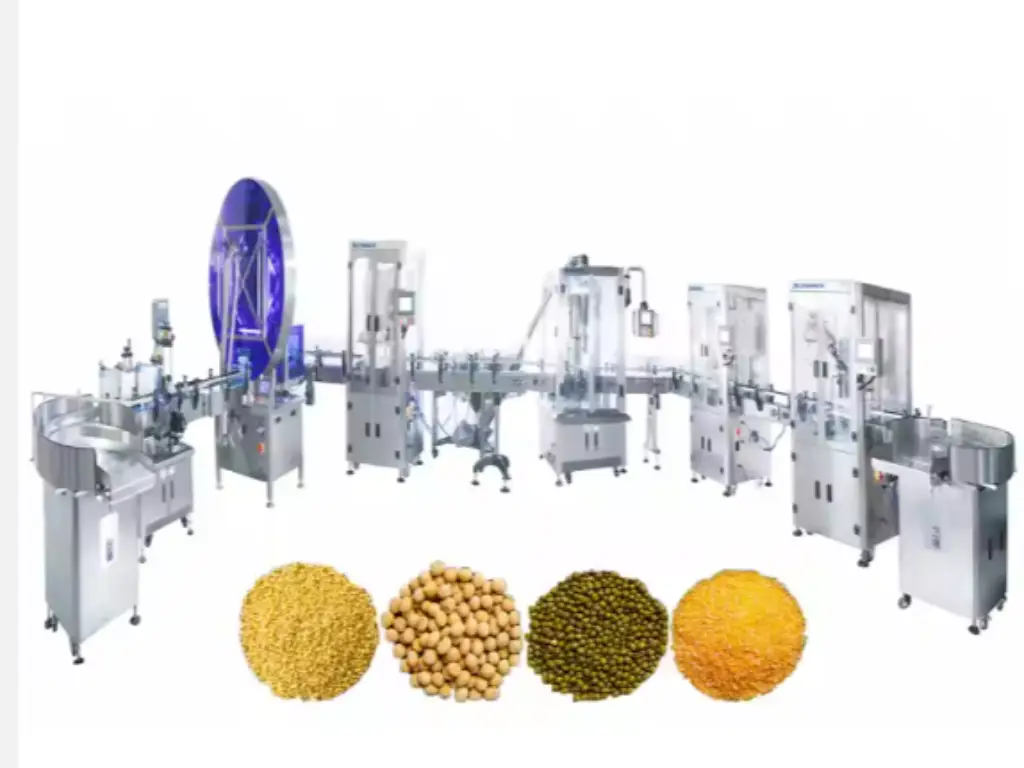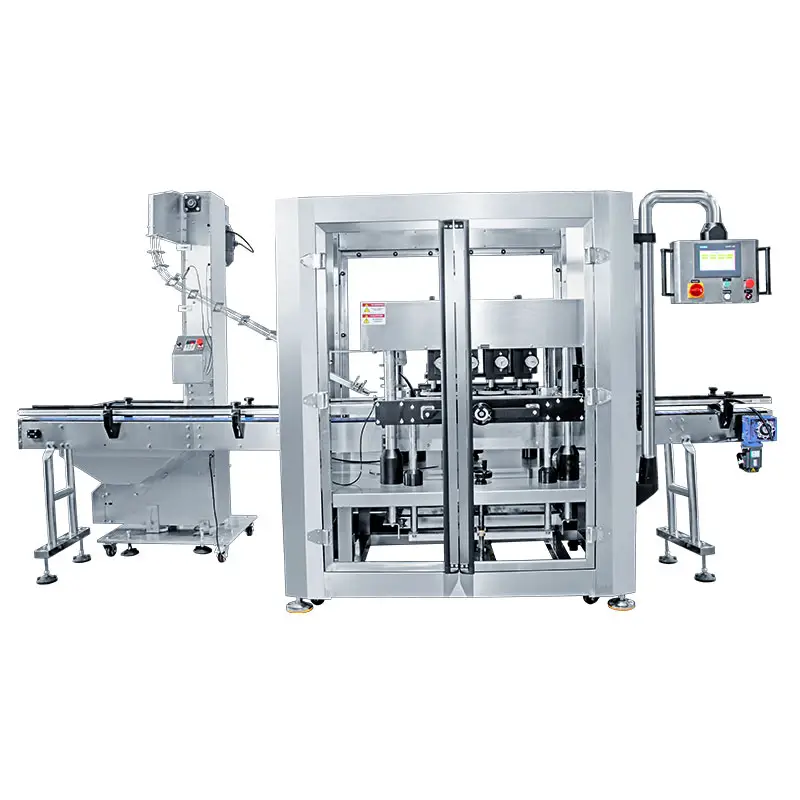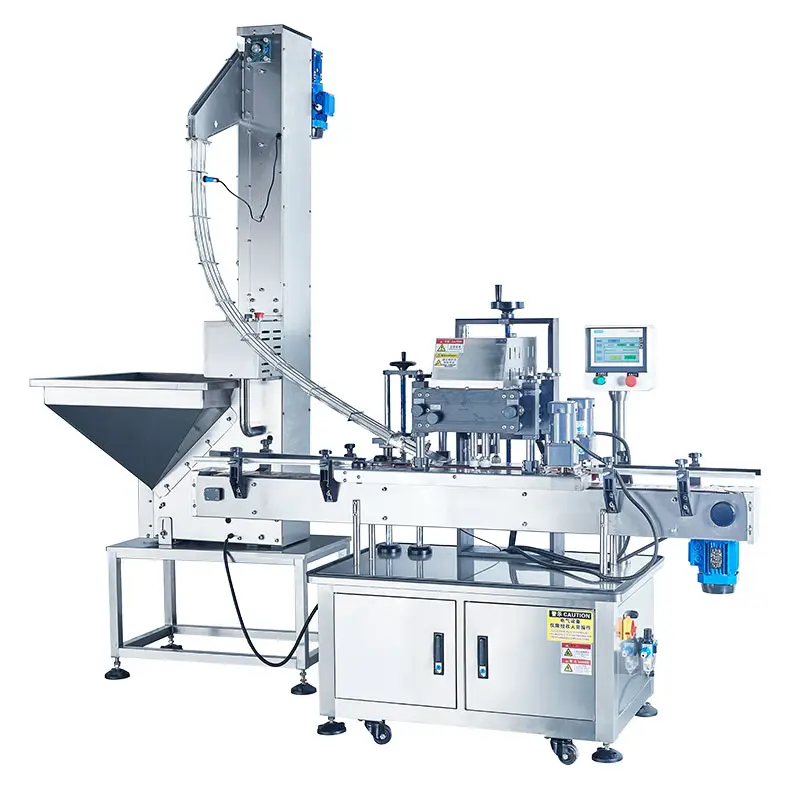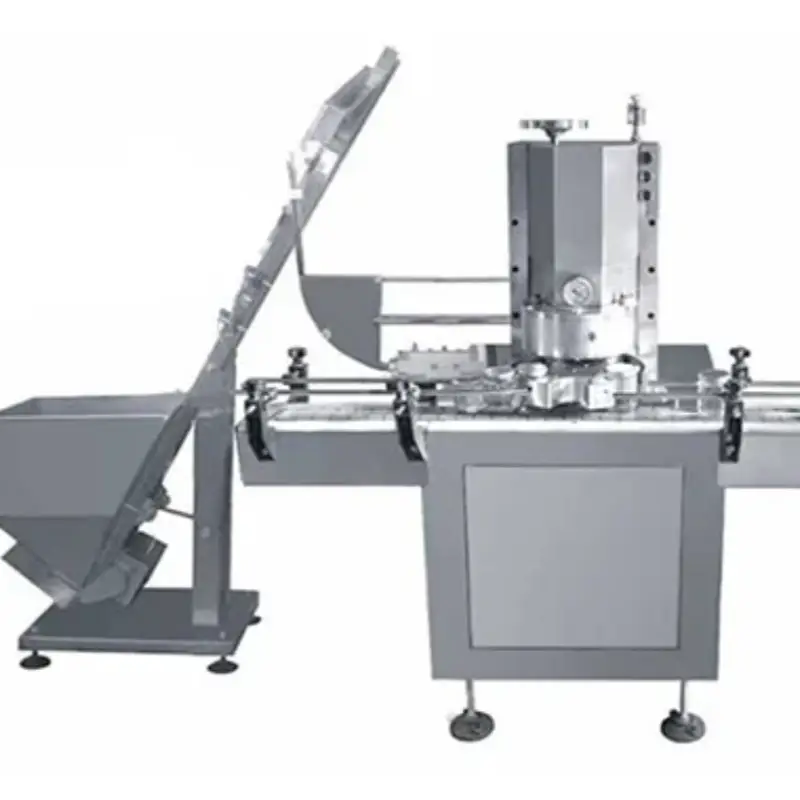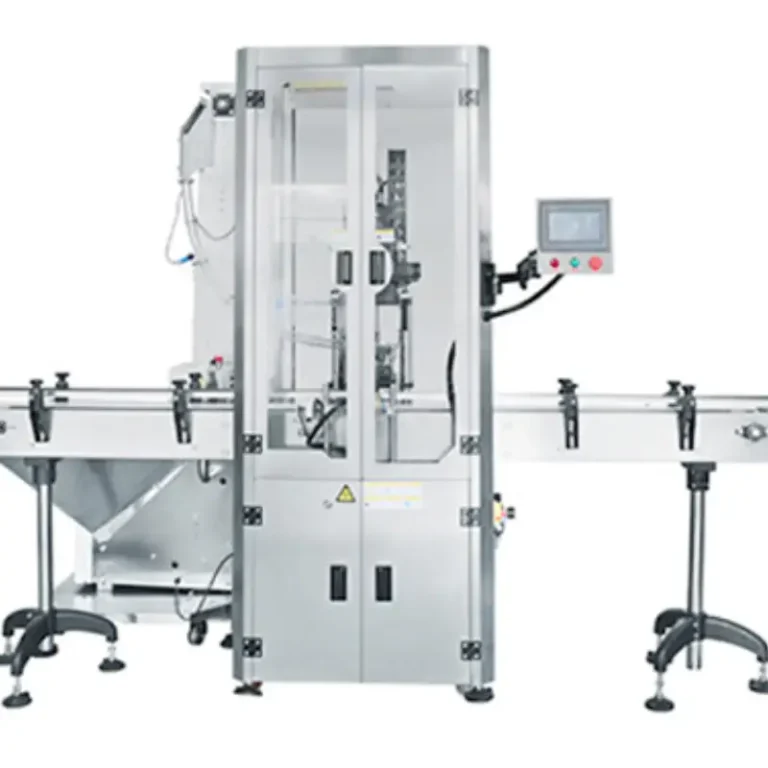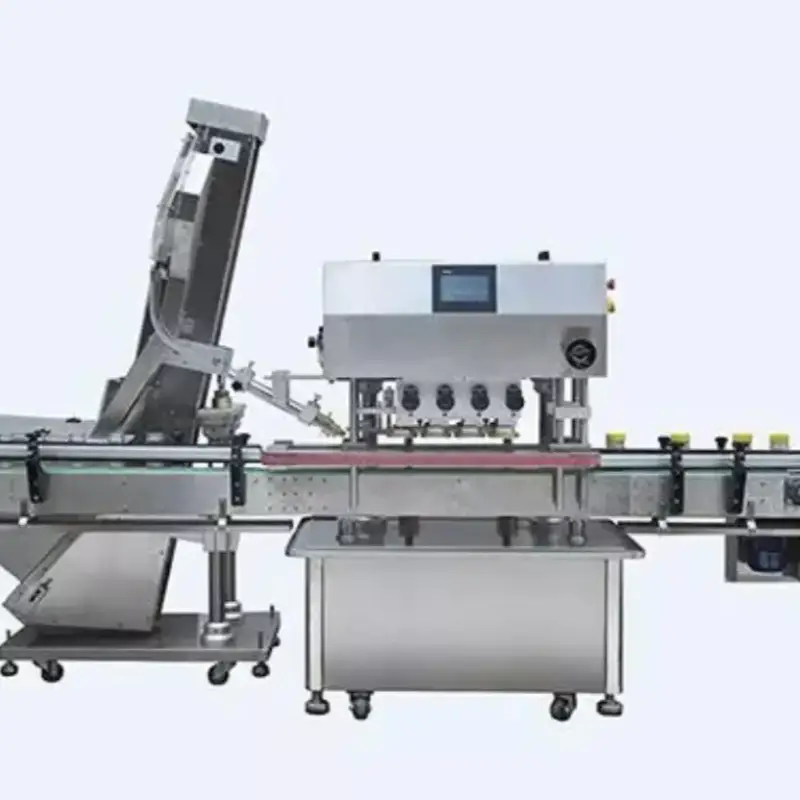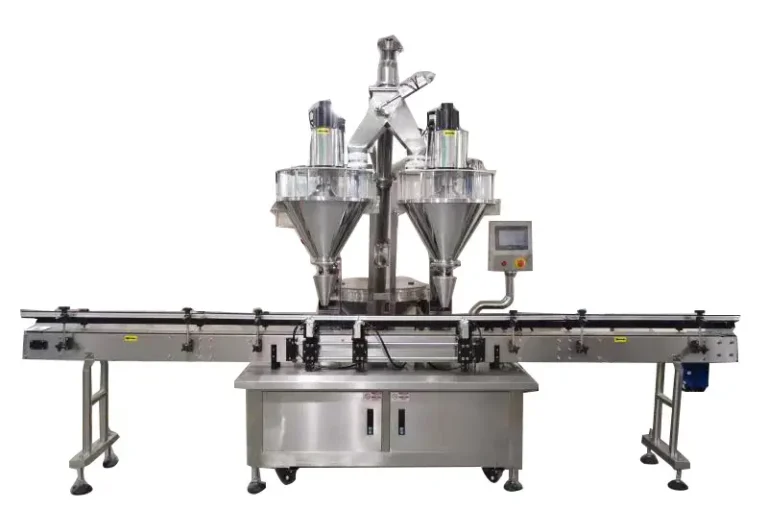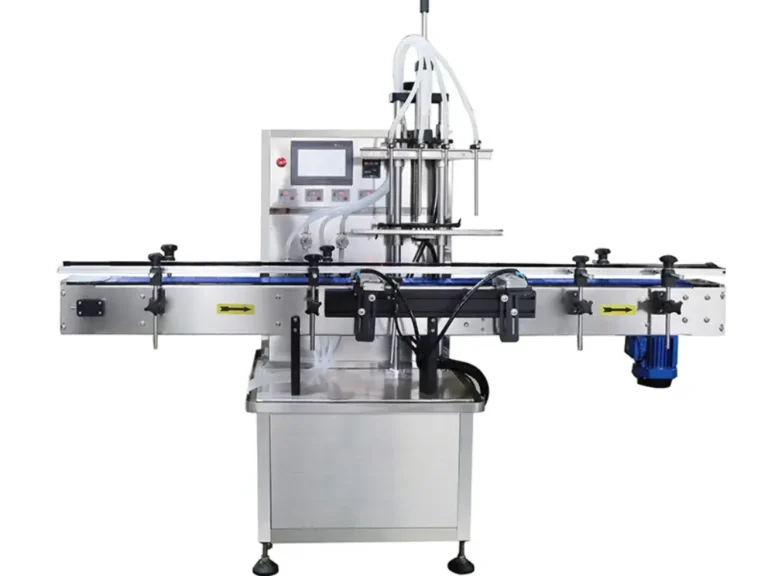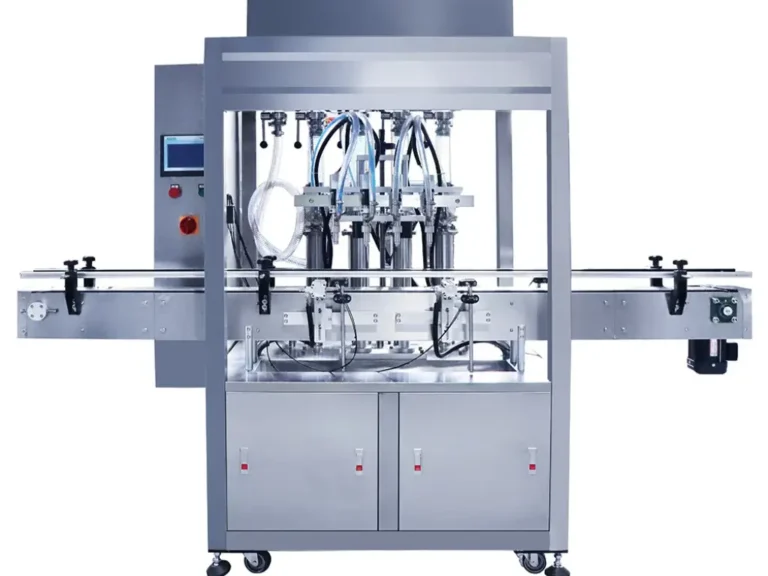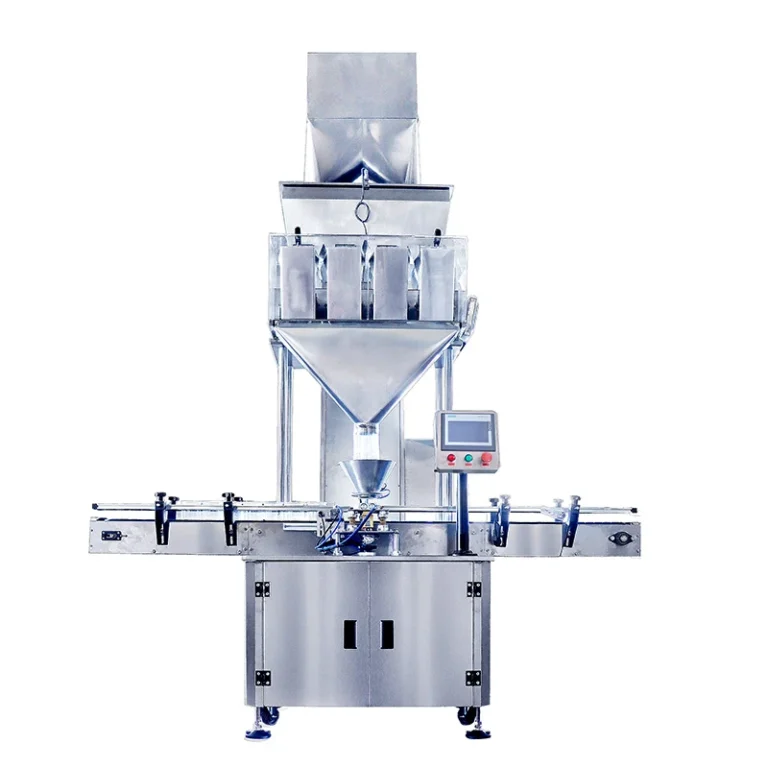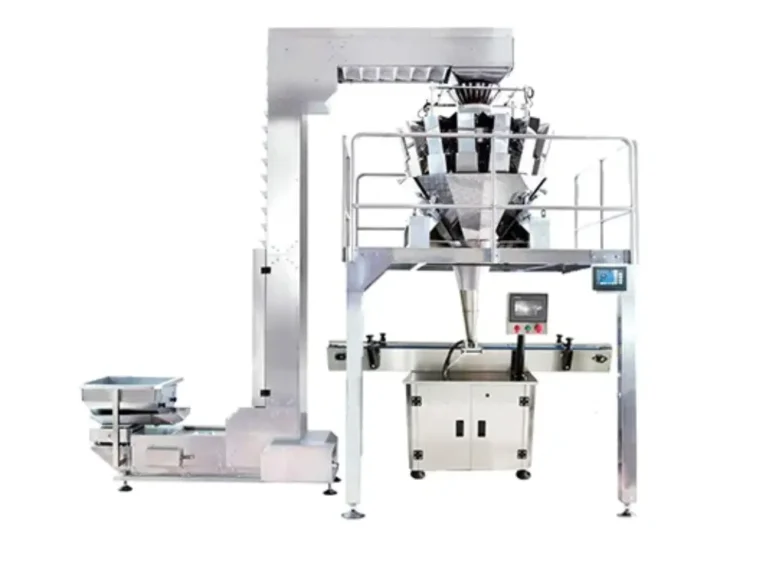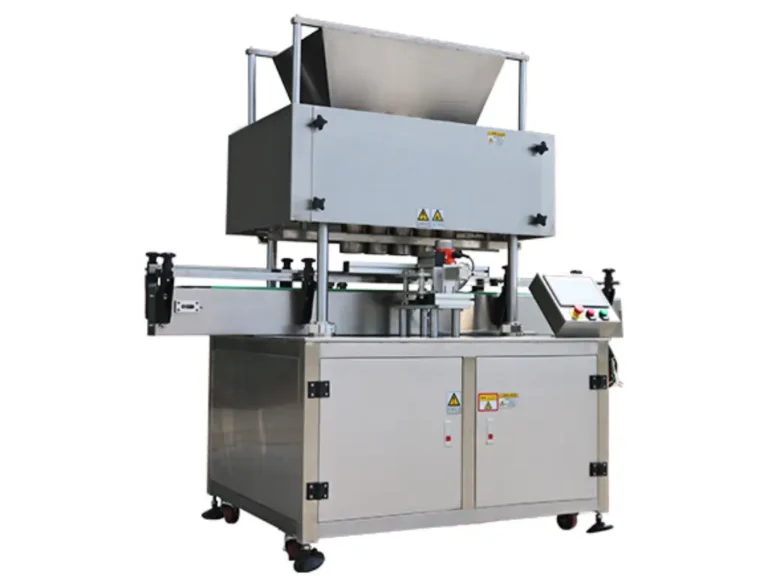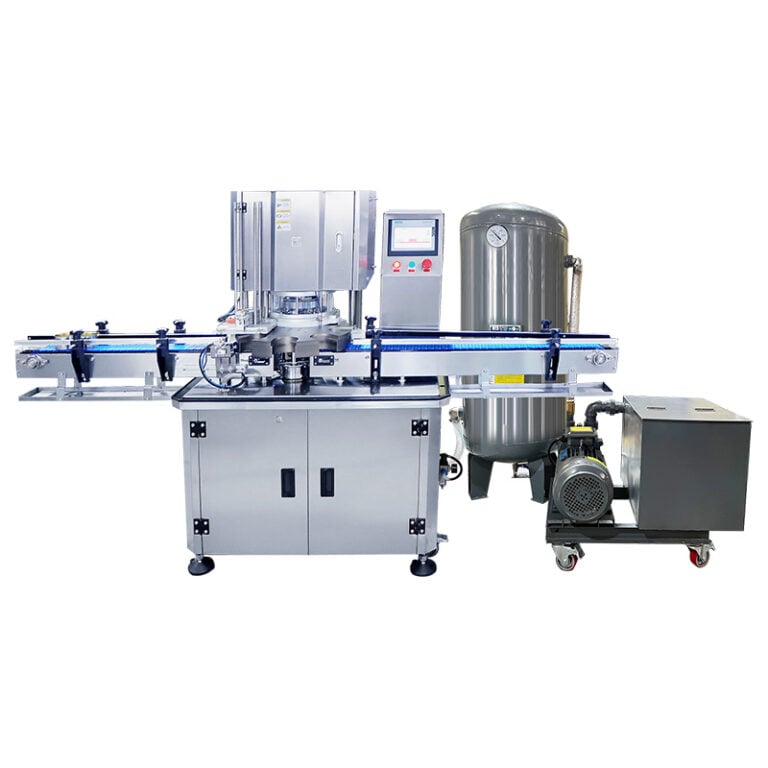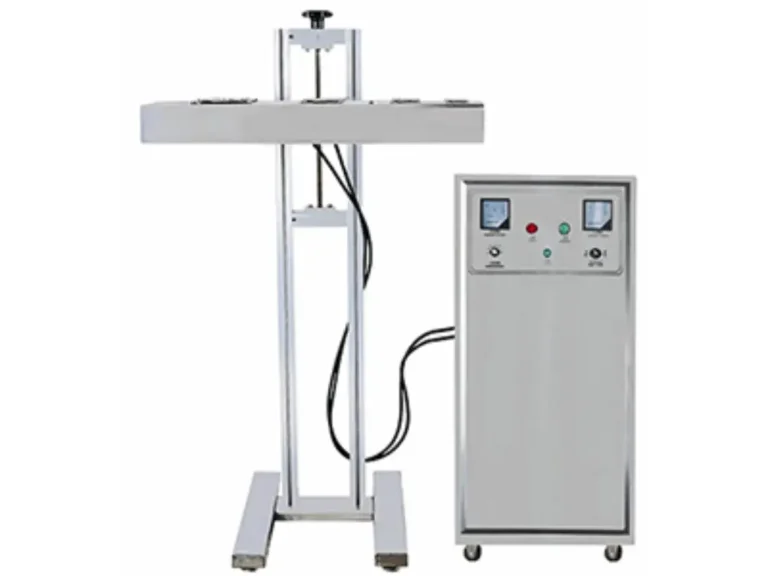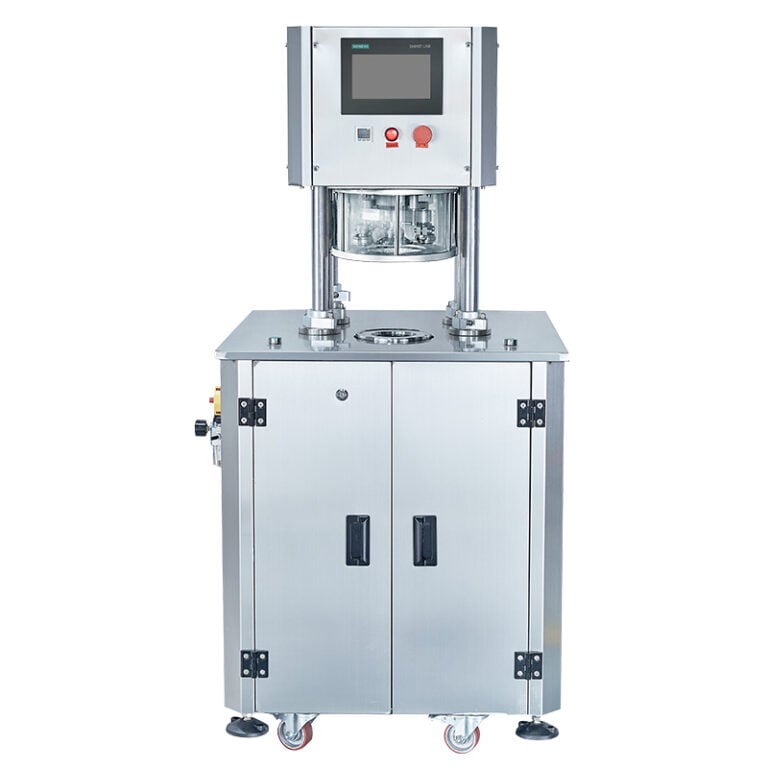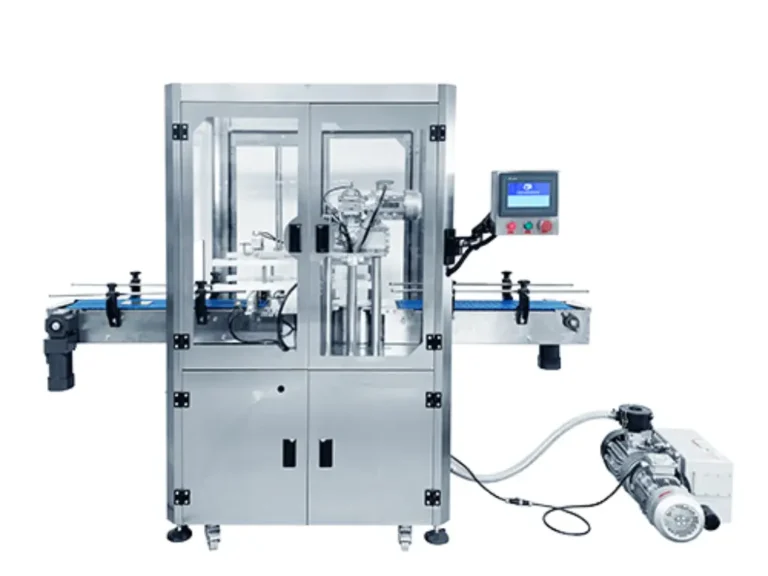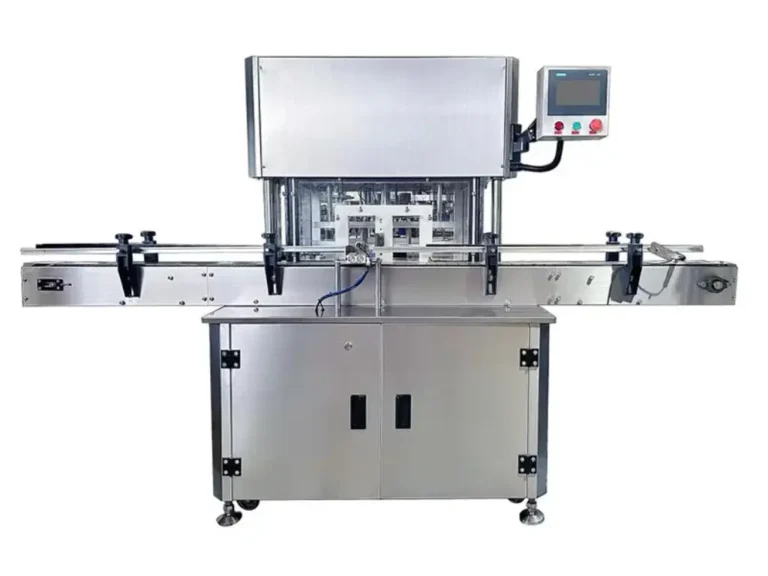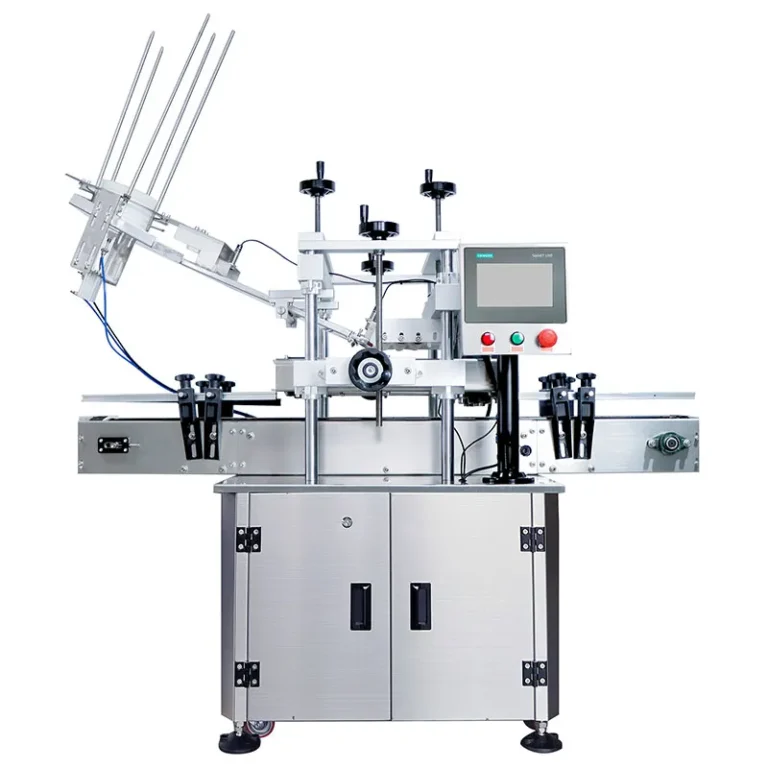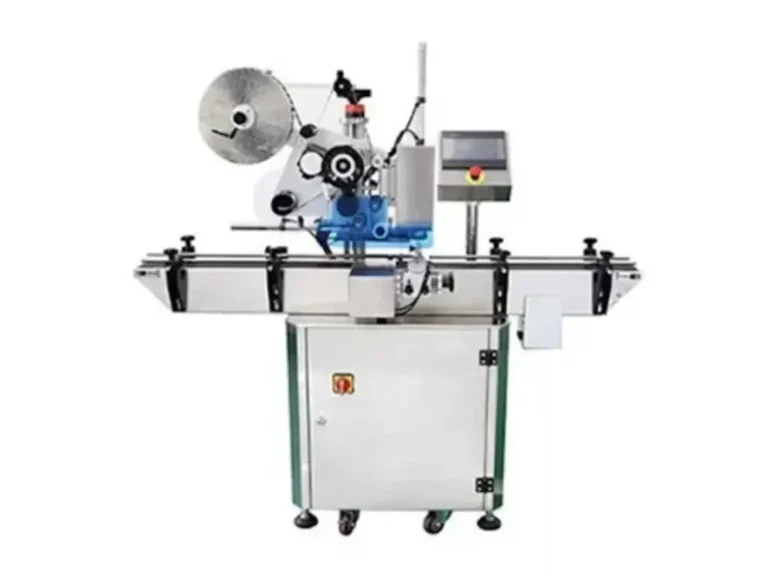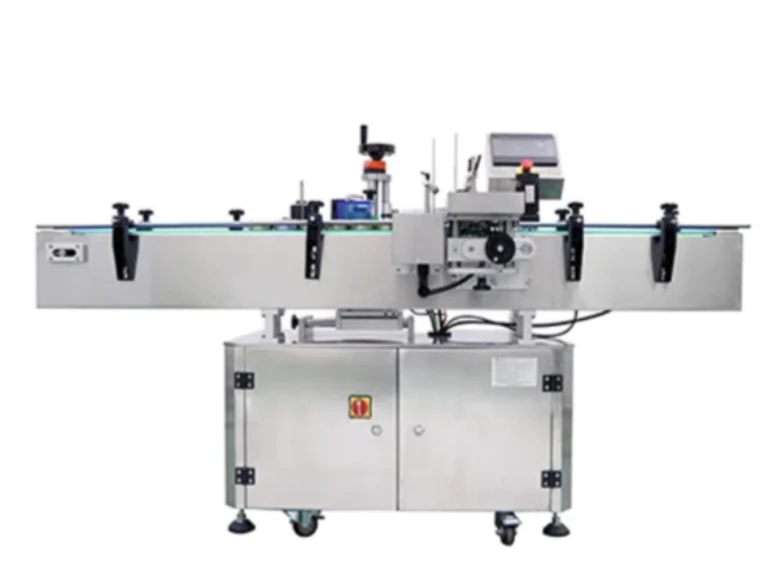思い浮かべてほしい。平均的なスーパーマーケットの通路は、食品包装に畏敬の念を抱いている。デリケートなベリーを包む保護用のクラムシェルから、鮮度のエッセンスを閉じ込めた真空シールのコーヒーに至るまで、包装は現在の食料システムの要である。実際、国連食糧農業機関(FAO)は、発展途上国では適切な包装がないことが、収穫後の食品ロスに大きな危険をもたらすと指摘している。対照的に、食品包装技術が発達した先進国では、腐敗のレベルはかなり低い。このことは、効果的な包装が、品質を保持し、安全性を確保し、流通を大幅に促進する上で果たす役割を浮き彫りにしている。食品包装は単なる美的なカバーではなく、食品供給の保護に深く関わる芸術であり科学である。この記事では、食品包装の定義、種類、重要性、業界を定義する洗練された機器を説明することにより、食品包装の義務を拡大することを目指しています。

食品包装とは何か:コアコンセプトの説明
最も簡単な言葉で言えば、食品包装とは、食品を輸送、保管、消費するために保護する道具である。食品技術者協会(IFT)が述べているように、このような保護措置の目的は、商品の取り扱いや移動による物理的な害、外部からの化学汚染、食品の腐敗を引き起こす微生物による損傷など、いくつかの環境的脅威から食品を保護する工学的なバリアを提供することである。これは、食品の周囲に保護用の微小空間を設けるようなもので、輸送中の品質と安全性を維持することを目的としている。米国では、食品医薬品局(FDA)も、その過程で食品に害が及ばないよう、包装は特定の用途に適したものである必要があると指摘している。
食品包装の主な役割とは?
最近の食品包装の重要性は極めて重要である。食品サプライチェーンと消費者の健康に関連する多くの部分の基礎を形成する重要な役割を果たしている。
- 食品の汚染を防ぎ、食品の安全を確保する: 包装は、細菌、カビ、酵母、昆虫、その他の異物などの微生物の侵入を制限する効果的なバリアである。このような保護機能は、汚染された食品による疾病を予防し、国民を守るという観点から不可欠である。包装がなければ、食品はより高いレベルで汚染されやすくなり、さらに劣化が早くなるのは明らかだ。
- 食品廃棄物を減らし、食品の賞味期限を延ばす: 食品包装は、含まれる酵素や微生物によって製品の自然な劣化を遅らせる、改質または制御された雰囲気を作り出すという点で、同様に重要な役割を果たしている。真空包装と改質雰囲気包装(MAP)は、鮮度を維持しながら食品の生存期間を延ばし、食品廃棄の可能性を大幅に減少させることが示されている。食品は包装材によって保存可能な期間が決まる。
- 消費者に重要な情報を提供する 正しい包装は、消費者が成分、栄養、重量、賞味期限、安全な使用方法について十分な情報を得られるよう適切な表示を行い、消費者に力を与えるとともに、健康の安全性を確保するのに役立つ。
- マーケティング、ブランド、製品の差別化: 食品パッケージの素材やブランドのスタイルや使い方は、消費者を惹きつけると同時に、ブランドのユニークな特徴やアイデンティティをしっかりと伝える。
- 取り扱い、輸送、保管に便利: 消費者は、開封しやすく再封可能な封筒や、保存と同時に分量のコントロールが容易なフォーマットにより、最新のパッケージングでより便利になった。
- トレーサビリティの促進: 今日の洗練された食品サプライチェーンは、バーコード、QRコード、その他の追跡可能な追跡装置でパッケージ化されており、製造業者や小売業者は、製品の原産地から販売までを追跡することができる。これは、品質管理やリコールを実施する上で非常に重要である。
- 総合的な価値提案を強化する: 適切な包装は、その品質と安全性を保護し、利便性を高め、重要な情報を提供することによって、特定の食品の価値全体を高めるのに役立つ。

食品包装の主な種類とその用途
食品包装のアプローチは多種多様であり、それぞれの包装設計は、食品の種類、望まれる寿命、食品の賞味期限、さらにはサプライ・チェーン・プロセスの複雑さに関連する特定の基準を満たすようにカスタマイズされている。
フレキシブル包装:多用途性と材料効率
フレキシブル包装 には、フィルム、箔、ラミネートなどの様々な非剛性素材が含まれ、バッグ、パウチ、さらにはラップに加工される。柔軟性があり、資源を経済的に利用できることから好まれている。
- アプリケーション 主にスナック菓子、加工食品(ポテトチップスやキャンディーなど)、焼き菓子、野菜、肉類、コーヒーや紅茶、パウチ入りの液体などを包装するのに使われる。
- メリット フレキシブルパッケージの利点には、軽量であること、材料や輸送のコストが低いこと、成形形状の管理が可能であることなどがある。フレキシブルパッケージは、使用される特定の材料やラミネートによって、湿気、酸素、光に対する特定のバリア特性を提供することができる。

リジッドパッケージング構造的完全性と保護強化
硬質包装と軟質包装の主な違いは、成形可能な素材を使用するか、あらかじめ決められた形状を持つ素材を使用するかの違いである。段ボール箱は、封入された食品を十分に支え、保護する。金属缶、ガラス瓶、ペットボトルも同様である。
- アプリケーション 硬質包装 は主に、缶入り飲料(炭酸飲料、ジュース、ビール)、保存スープ、野菜、果物、ガラス容器、乾物(シリアル)、カートン入り乳製品、および強力な包装を必要とする一部の加工食品の保存に使用される。
- メリット 適切な物理的梱包は、移動中に押しつぶされたり衝撃を受けたりするような物理的損傷から大きく保護します。硬く梱包された箱にぶつかったり押したりしても、通常大きなダメージは受けません。硬い梱包は密閉性が高く、食品の保存性を高め、外的要因から保護します。
その他の注目すべき包装タイプ
フレキシブル包装や硬質包装といった主要な種類の他に、特定の保存や消費要件を目的とした特殊な種類がいくつかある:
- 無菌包装: この洗練された技術には、食品とパッケージの両方を別々に殺菌し、無菌環境でそれらを組み合わせることが含まれる。この技術により、牛乳やジュースのような腐りやすい食品を、冷蔵せずに長期間新鮮に保つことができる。
- 修正大気圧包装(MAP): この食品包装技術は、密封されたパッケージ内のガス組成を一定に制御することを指す。通常、酸素濃度を下げ、窒素と二酸化炭素を増加させることで、微生物の繁殖を抑制し、生鮮食品、肉、魚介類の呼吸を遅らせ、鮮度を長持ちさせる。
- 食用パッケージ: エディブル・パッケージングは、環境に優しい食品グレードの素材で、製品と共に食べられるようにデザインされた、若く変化し続ける分野である。海藻フィルムやフルーツレザーパウチなどがその例で、包装廃棄物を最小限に抑えることもできる。
食品包装業界で使用されるさまざまな包装材料
すべての選択肢 食品包装材料 というのも、それぞれがユニークな特性を持ち、さまざまな用途に適しているからだ。
プラスチック万能の主力製品

プラスチックの主な利点は、包装の歴史の中で最も汎用性が高く、経済的な素材であることだ。個々の素材ではなく、一般的なファミリーであり、正しい選択ができるようになるには、まずその主な種類を知ることである。例えるなら、飲料用ボトルの金字塔は透明で強靭なPETであり、丈夫で耐薬品性に優れたHDPEはミルクジャグ市場を席巻し、耐熱性のPPPは電子レンジで温められる容器やヨーグルトカップに人気がある。プラスチックは非常に軽量であるため、戦略上、輸送コストは大幅に削減されるが、その膨大な成形能力はブランディングに無限の創造性をもたらす。とはいえ、プラスチックは、ブランドが交渉しなければならない深刻な環境問題を引き起こしている。反プラスチックの消費者ムードはますます高まっており、バージン・プラスチックの過剰使用はブランドのイメージを損なう可能性がある。さらに、ほとんどのプラスチックは理論的にはリサイクル可能だが、リサイクル率が低いという現実は、特殊な分別が必要で適切なインフラが整備されていないため、企業の社会的責任として重大な問題である。
ガラス品質と純度の代名詞

ガラス包装は、製品本来の品質に対する信頼を伝える全体的な品質の印象を与える。その最も重要な特徴は、絶対的に化学的に不活性であること、つまり食品と反応を起こさないため、中に入っている食品本来の風味や純度を変えないことです。これは、ジャムや高品質のソース、オーガニック飲料など、味の完全性が不可欠な製品を扱う際に非常に重要である。また、酸素や湿気に対する全体的な耐性があるため、保存期間が非常に長い。戦略的には、ガラスはプレミアム、ナチュラル、オーガニックのブランドイメージを打ち出すのに最適な製品だろう。しかし、その利点は明らかに代償を伴う。最大の弱点はその重量で、輸送コストとカーボンフットプリントを大幅に引き上げてしまう。ガラスは、その製造にエネルギー集約的ではあるが、循環型経済におけるリサイクル可能なモデル素材である。
メタル耐久性と長寿の守護神

最高水準の物理的安全性が要求され、最大限の賞味期限が可能な状況では、金属製包装に取って代わることはできない。飲料缶(ビールやソーダ)の市場で主流となっている軽量で耐食性に優れたアルミニウムと、食品缶(果物や野菜、スープ)の胴体を作り、冷蔵なしで何年も壊れることなく保存できる高い強度を持つスチールの2種類に大別できる。サプライチェーンとしての金属パッケージは、温度や圧力の急激な変化に耐えることができるため、非常に強靭である。その価値は、倉庫や店舗の棚における製品の長期安定性を必要とするビジネスモデルとは比較にならない。金属は、持続可能性という点では最高のパフォーマンスを発揮するもののひとつと考えることができる。リサイクル市場でも価値の高い商品であり、高度に発達した効率的な回収ネットワークを持っている。
紙と板紙:環境に優しく万能な媒体

紙は、環境に対する責任に関するブランドメッセージを伝え、革新的なデザインを実証するための優れた媒体となり得ます。特に、持続可能な形で伐採された森林(FSC認証など)を原料とする場合、その基本的な強みは再生可能性にあり、ブランドのイメージに直接的な好影響を与えます。紙はその高い印刷適性により、ブランドのストーリーやビジュアル・アイデンティティを伝えるための理想的なキャンバスである。しかし、ブランドはその守られた特性を高く評価すべきである。紙は水分、油脂、酸素に対する天然のバリア性が低い。そのため、プラスチック層やアルミシート(コンポジット・カートンの場合)を使用する必要があり、その結果、リサイクルが難しくなる。
バイオプラスチック(PLA):エコ物語の新たな主人公

バイオプラスチックは、プラスチック汚染に対するパッケージ業界のもうひとつの大きな革新である。これは、トウモロコシのデンプンなど再生可能な材料を使用して作られるプラスチックと定義できる。最も一般的なのはPLA(ポリ乳酸)で、サラダ容器や冷飲料カップなど、賞味期限の短い製品によく使われている。PETと同様、高い透明性と成形性を持つ。しかし、主な欠点は、熱に耐えられないことと、生分解性は特殊な工業用堆肥化プラントでしか達成できないことである。ブランドの場合、PLAの使用を決定することは、単に素材を選択することではなく、環境に関するストーリーを選択することである。とはいえ、間違った思い込みを避けるために、製品の適切な廃棄方法について消費者に正しく伝え、使用期限が来たら適切に廃棄されるようにしなければならない。
明確で一目でわかる比較を提供するために、これらの素材に関する究極の決定マトリックスを以下に示す:
| 決断の次元 | プラスチック | ガラス | メタル | 紙・板紙 | バイオプラスチック(PLA) |
| 製品保護(バリア) | グッド/エクセレント(調整可能) | 素晴らしい | 素晴らしい | 不良(コンポジットが必要) | ミディアム(水分バリア性が低い) |
| 製造単価 | 低い | 高い | 中/高 | 低/中 | 中/高 |
| 輸送コストと効率 | ロー(軽量) | 高い(重い) | ミディアム(重め) | ロー(軽量) | ロー(軽量) |
| ブランド認知 | 主流/便利 | プレミアム/ヘルシー | 耐久性 / 伝統的 | ナチュラル/エコフレンドリー | 革新的/環境に優しい |
| デザインと形状の自由 | 素晴らしい | ミディアム(限定) | ミディアム(限定) | 素晴らしい | エクセレント(PETに類似) |
| サプライチェーンの耐久性 | グッド | 貧しい(脆弱) | 素晴らしい | ミディアム | 中(脆い、耐熱性が低い) |
| 持続可能性(全体) | 悪い(賛否両論) | 良い(リサイクル可能/エネルギー使用量が多い) | エクセレント(リサイクル価値が高い) | 良好(再生可能/リサイクルが複雑) | 中程度(産業堆肥化が必要) |
| 最適な製品タイプ | ドリンク、スナック、ソース | ジャム、プレミアムドリンク | 缶詰、炭酸飲料 | 乾物、穀物、Eコマース | 冷食、サラダ、賞味期限の短いもの |
効率的な食品包装プロセスと信頼性の高い機器
包装された食品を工業製品の形から消費者の手に渡るようにするためには、数多くの複雑なステップを踏まなければならない。最高の製品品質を確保しながら効率化を達成するためには、これらのステップの一つ一つを理解し、適切で信頼できる専門的なツールを使用する必要がある。
主要なステップ 食品包装工程
すべての食品には特定の種類とレベルの包装があり、これと生産量が、食品包装作業に関わるステップの特徴とともに、順序を決定する。しかし、通常の工程は以下の通りである:
- 清掃と衛生: 食品と包装資材がいかなる形でも汚染されていないことを確認することは、食品の安全性と品質の基本要件であるため、非常に重要である。これには、洗浄、殺菌、その他必要とされる衛生管理プロセスが含まれる。
- 製品の充填: これは、食品を一次包装容器に適量かつ制御された方法で入れる工程である。食品の状態によって、液体、固体、粉末、粘性など、使用される方法は全く異なる。
- 容器の密閉: 一次包装を閉じ、外部環境から確実に保護する行為。フレキシブルフィルムのヒートシール、金属缶のシーム、ボトルのキャッピングなどが含まれる。
- ラベリングとマーキング: 原材料、栄養価、正味重量、製造日または消費期限、法的要件、その他のブランドロゴを含む必要な情報をパッケージに貼り付ける。トレーサビリティは通常、バッチ番号や製造日などコード化される。
- 二次梱包: 流通経路における食品の取り扱い、輸送、保管を容易にするために、小包装を大きなもの(カートン、トレイなど)にまとめること。
- 三次梱包とパレタイゼーション: 包装の最終段階で、パレットに二次包装を積み重ね、ストレッチラップやその他の手段で固定することにより、包装された商品を大量輸送や倉庫に保管する準備をすること。

食品包装の効率を高めるオートメーション
食品の大量生産を必要とする現代の食品分野では、自動化は不可欠である。自動化機械の採用は、主に以下のような利点をもたらす:
- より高い出力: 手動のシステムに比べ、自動化システムは驚くべきスピードで機能し、一定時間内に包装できる個数を大幅に増やすことができる。
- より良い持続性、一貫性、品質: オートメーションは、精密機械を使って非常に反復的な作業を行うことで、ばらつきを減らす。これにより、充填重量、シーリング、さらにはラベルの位置の一貫性が保証され、エラーによる無駄が削減されます。
- 労働コストの削減: 反復作業から生じる手作業への過度の依存を減らす、あるいは排除することができ、運用コストを削減することで、削減したコストをより高い資格を持つ従業員の雇用に振り向けることができる。
- より衛生的で安全: 自動化により、包装される製品だけでなく、包装材料に必要な人間の直接監視が制限されるため、汚染のリスクが大幅に減少し、より高い衛生基準につながる。
- 材料効率の向上: 自動化は、消費される材料と使用されるエネルギーを削減する方法で実施することができ、経済的でエコロジーであると同時に、より良いオペレーションにつながる。
レバパック高品質の食品包装機器のワンストップデスティネーション
信頼性が高く効果的な包装自動化システムを必要とする食品製造業者にとって、Levapack社は18年以上にわたって献身的なパートナーとしての役割を果たしてきました。2008年に設立されたLevapackは、缶詰、シーリング、および一般的な包装機械の研究、開発、製造における豊富な経験を持っています。同社のブランドは世界中で認知されており、その機器は100以上の国と地域で導入されている。今日に至るまで、Levapack社の機器は世界中で使用されており、その品質と信頼性を証明しています。
Levapack社の洗練された機器コレクションは、以下のような幅広い食品包装要件に対応しています:
- プレメイドパウチ包装機 これらの機械は、スナック菓子や加工食品から粉末に至るまで、様々な製品をパウチに充填するのに正確かつ効率的である。
- 固形充填機 これらの機械は、スナックや穀物のような固形食品の正確かつ迅速な包装に非常に効果的です。
- 粉体充填機 これらの機械は、ほとんど手間をかけることなく、粉末製品を無駄なく正確に充填することができる。スパイス、コーヒー、栄養補助食品などを簡単に充填できます。
- 粘性液体充填機: これらの機械は、ソース、ジャム、蜂蜜のような濃厚で粘着性のある液体を充填し、良好な結果をもたらす。
- シーリング/シーミングマシン これらの機械が提供する気密性と安全性の高いシーリングは、生産ラインに不可欠な製品の鮮度と安全性を保証する。
- キャッピングマシン あらゆる形状やサイズのボトルや容器に、信頼性が高く効率的なキャッピングを行うために、これらの機械は非常に優れています。
- ラベリングマシンおよびコーディングマシン: これらの機械は、その他の包装形態にラベルやコーディング情報を高速かつ正確に貼付するためのソリューションを提供する。
Levapack社は、各食品加工ラインには独自の特徴と要件があることを理解しています。経験豊富なエンジニアと完全に開発されたOEM/ODM能力の支援により、オーダーメイドのパッケージング・ソリューションを提供することができる。Levapack社は顧客と協力し、現在の機械の改造や全く新しい包装ラインの構築など、カスタマイズされたソリューションを提供している。
Levapack社の機器の信頼性と革新性は、高品位の素材と部品を使用していることに起因しています。設備は食品グレードの304/316ステンレス鋼で作られており、丈夫で腐食せず、耐久性に優れている。重要な電気部品は、シーメンス/三菱(PLC)、DELTA(タッチスクリーン)、SEW(モーター)、SMC(シリンダー)、シュナイダーエレクトリック(電気部品)といった海外の有名メーカーから調達しているため、品質と連続寿命が保証されている。
Levapack社は、単一機械から完全に自動化された包装ラインまで、食品包装プロセスの効率性と信頼性を保証するあらゆるものを提供しています。同社の機器は、製造業者の生産性向上、コスト削減、そして世界中の消費者への高品質な製品の提供に貢献している。品質に対する同社のコミットメントのさらなる証明は、国際的な規制への準拠を証明するCE、ISO、CSA認証によって示されている。
わずか1週間で生産能力を拡大
80台以上のマシンが在庫にあり、急な注文にも対応可能
ERP主導のサプライチェーン、98.5%の納期遵守
CNC精度を持つ🔑4000㎡の工場
固形物、粉体、液体、プレメイドパウチ用のワンストップ 🔑 パッケージングソリューション
食品包装の新たなトレンド:持続可能性の推進
消費者の意識の変化、技術の向上、気候変動に対する世界的な関心の高まりが、食品包装の開発を形成している。これらの要因は、食品品質の潜在的な組成変化に対処するだけでなく、食品の封じ込め・保護方法に根本的な変化をもたらしている。
こうしたトレンドの中で最も顕著なのは、持続可能性への関心である。環境に対する消費者の関心の高まりに伴い、無公害素材の解決策を見出すための革新的な進歩がもたらされた。これには、リサイクル可能なプラスチック、堆肥化可能なプラスチック、生分解性プラスチック、そして従来のプラスチック廃棄物や埋立地廃棄物の削減に努める植物由来のバイオプラスチックの開発と採用が含まれる。

この持続可能性への注目は、他の新しいトレンドにも大きく影響している。センサー、インジケーター、抗菌コーティングなど、食品の安全性と保存性に大幅な改善をもたらす新しいスマート・パッケージング技術は、環境に配慮することも目的としている。科学者たちは、生産工程における材料や排出物を最小限に抑えた持続可能な包装を開発しようと奮闘している。
食品業界に影響を及ぼしているもうひとつの注目すべき現象は、電子市場で、これはより速いスピードで成長・拡大しているようだ。食品のオンライン販売には、輸送プロセスに耐える強固な包装が必要である。しかし、こうしたソリューションが持続可能であることを保証し、新製品を促進することに関心が移っている。そのため、ブランドは環境に配慮しながら電子商取引のニーズに対応する方法を模索するようになり、リサイクルや堆肥化が可能な保護素材や軽量素材を革新するようになっている。
おわかりのように、これらの新たなトレンドの中で、持続可能性が最も重要な理由となっている。これは、食品包装業界が取り組んでいる最も重要な問題のひとつであり、無駄を省くためのあらゆることを実施している。この戦略は、包装廃棄物を削減する軽量最適化設計、循環経済を促進するリサイクルシステムの強化、包装用の革新的で持続可能な材料の使用で構成されている。正しい答えは、食品包装が生態系に与えるあらゆる環境影響、特に原材料の採取から使用済み包装の管理まで、包装が環境に与える影響を考慮することである。こうすることで、食品包装はユーザーフレンドリーであるだけでなく、環境への責任も確保することができる。
食品包装のトレンドについて詳しくお知りになりたい方は、ぜひご一読ください。 食品包装のトレンドはどのように業界を形成しているか
結論
食品包装は、食の安心・安全を守るという基本的な機能から、情報提供、促進、さらには主要な持続可能性問題への対応といった現在の多面的な役割に至るまで、今日の社会で重要な役割を果たしている。継続的な技術の進歩と環境問題への意識の高まりに伴い、食品包装の領域は、その主要な機能を超えて、実用的かつ人道的な目的を果たす新たな形のイノベーションによって形作られることになるだろう。これによって、食品の生産と消費のサイクルは、より安全で環境に優しいものになるだろう。
食品包装ビジネスにご興味のある方は、このガイドをお読みください。 食品包装ビジネスの始め方.

